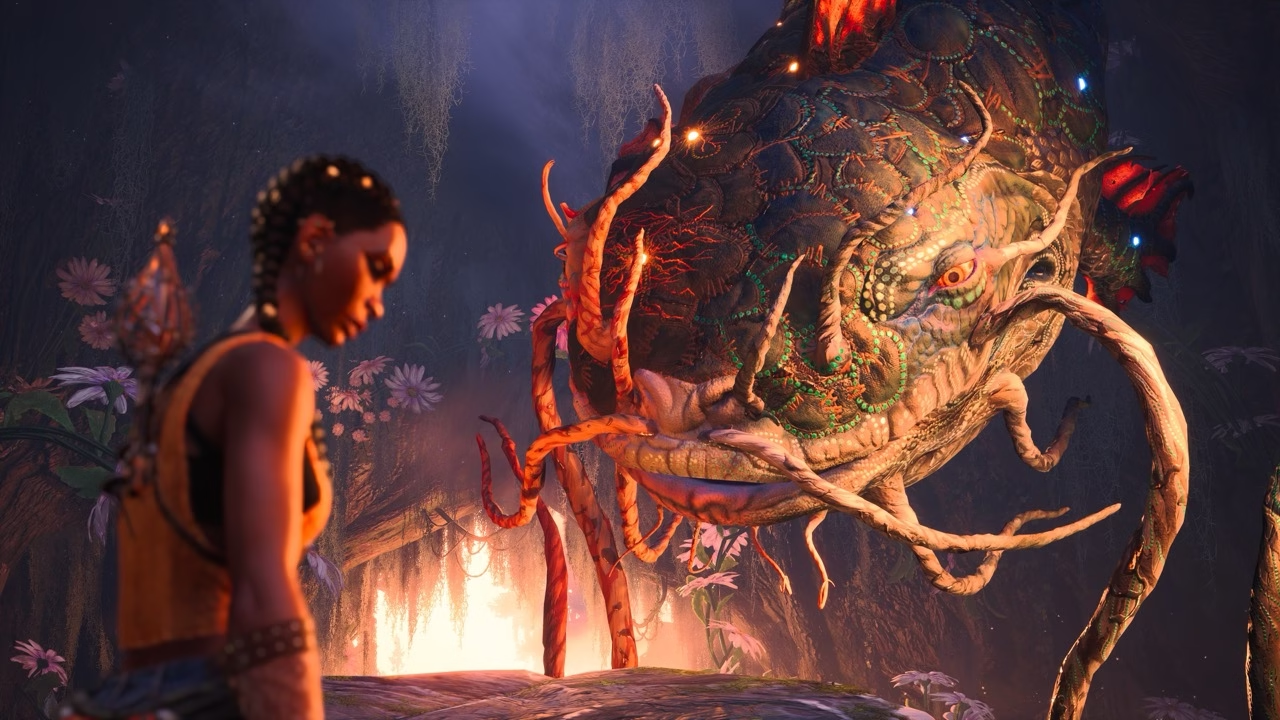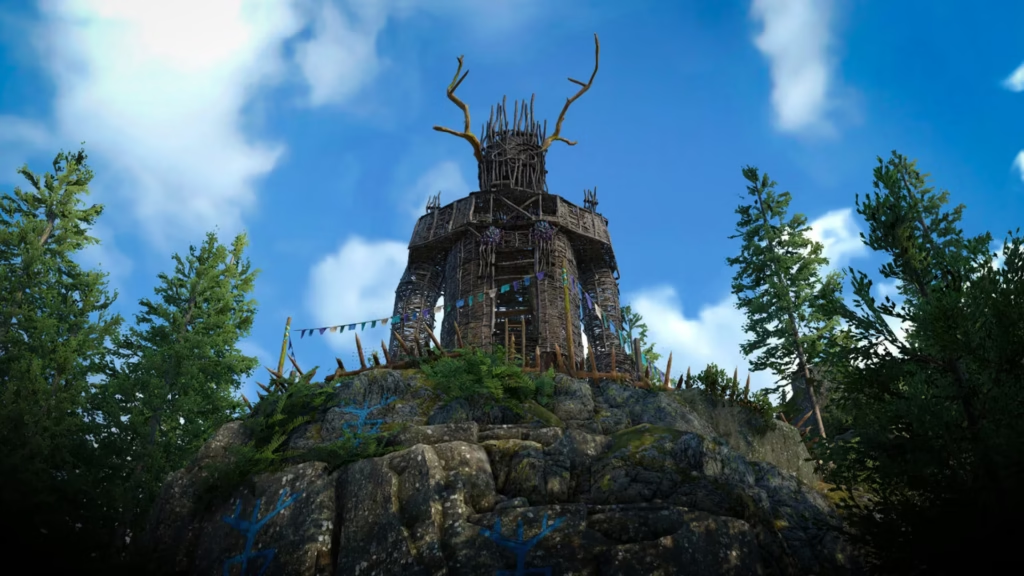In general, folklore appears to have taken a backseat to mythology when it comes to providing inspiration for videogames. While this is particularly so in India — where almost every second game appears to have something or the other to do with the Ramayana or Mahabharata — the trend is also palpable in other countries. And honestly, it’s all a bit tired now. Which is why it was such a breath of fresh air to experience a game so rich in folklore, from a source I knew so little about: Southern Gothic. This, for the uninitiated, is a literary genre blending Gothic tropes with American South settings, exploring decay, grotesque characters, social taboos, racial tensions, and haunting pasts.
Compulsion Games’ South of Midnight puts you in the shoes of Hazel Flood, a teenaged Weaver — someone who relies on magic to mend broken bonds and spirits — from Prospero, a fictional land set in the United States’ Deep South. After watching her mother and home get washed away in a hurricane, Hazel sets off on a quest that sees fantasy and reality intertwine. Over the course of around 13 or 14 hours of gameplay, she encounters all manner of creatures and monsters, finds out about them and their respective pathos, and in the process, learns a lot more about herself and her family.
Of Rougarous and Boo Hags
The areas in and around Prospero — which reflects various Southern landscapes, including flooded countryside, swamps, and Appalachian mountains — are eye-catching enough (and we’ll get back to this shortly), but it’s the creatures who imbue the setting with life. There’s Two-Toed Tom, the gigantic alligator with an island on his back; Huggin’ Molly, the spider-esque creature who apparently abducts children; and the talking Catfish on whose back you ride across swamps. All these entities (and more) are a version of characters that feature in southern folklore. For instance, there are multiple interpretations of Huggin’ Molly. The popular ones describes her as a seven-footer — dressed in a black cloak and wide-brimmed hat — who is said to roam the streets at night, targeting children who are out after dark. Molly hugs her victims tightly and screams in their ears before disappearing. While her actions are terrifying, she does not physically harm anyone.
One of the interpretations of her story is that she “tragically lost her child and was driven mad by grief, causing her to wander the streets at night. She sought out other children to hug in an attempt to cope with her sorrow.” This is the sort of area in which South of Midnight operates. The prevalent idea is that behind this presumably frightening, antagonistic force and all its anger/resentment/bitterness lies some deep sorrow and hurt. And it’s only by understanding this that healing (the game’s central conceit) can begin.

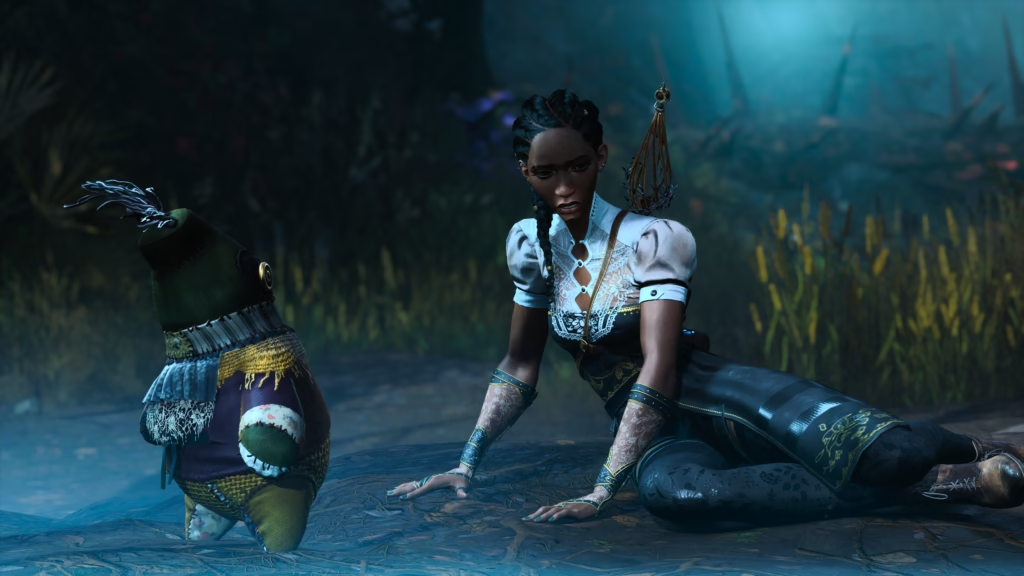
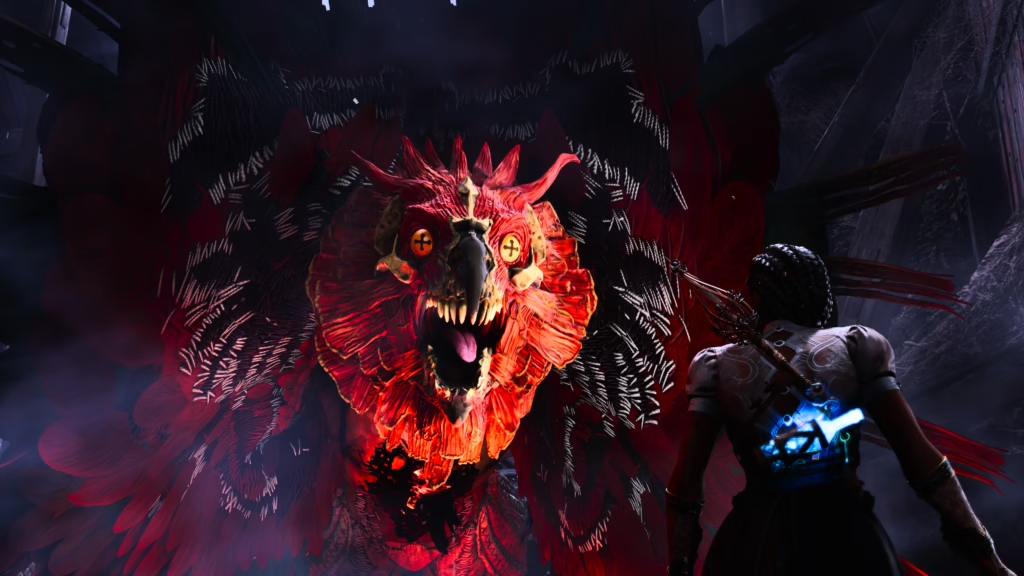
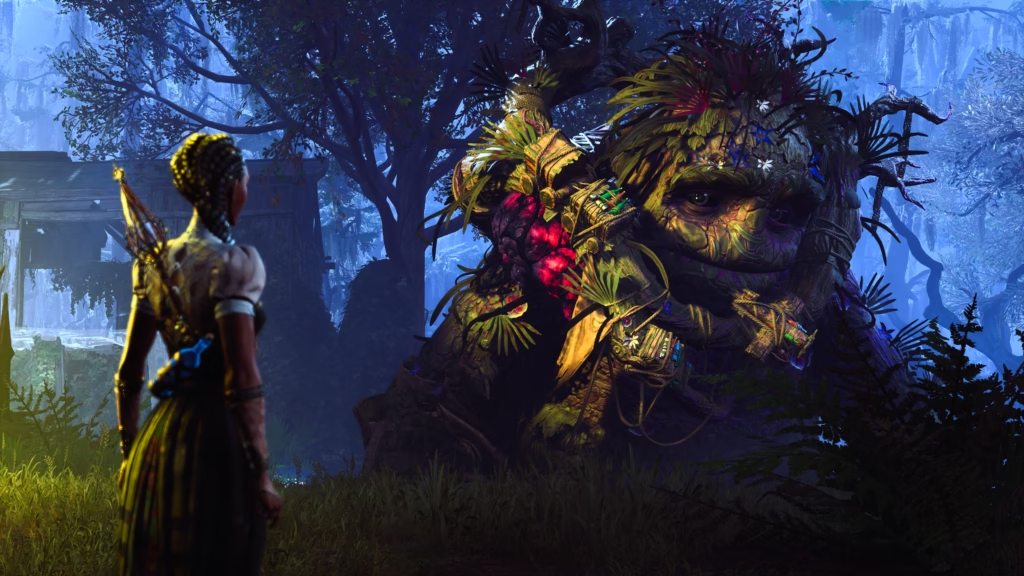
Over the course of 14 chapters, Hazel — who discovers her Weaver abilities early on — follows one lead after another to track down her mother. And in so doing, discovers secrets at the heart of each of these folklore legends. I usually tend to prefer fluid and open-ended narratives, but there was something about the crisp and compartmentalised approach South of Midnight takes to storytelling that I rather enjoyed. To elaborate, every alternate (or so) chapter sees the introduction of a new entity, Two-Toed Tom for instance. Through a combination of exploration, puzzle-solving and combat, Hazel is able to uncover information about these entities and their raison d’être. And after a final encounter, or boss battle if you will, she heals (or at least provides closure) to their trauma. And when I say trauma, I mean some truly traumatic stuff — and you’ll just have to check it out for yourself. This pain, suffering, hurt and misery leads to disruptions in the metaphysical fabric of the South of Midnight world (or the Grand Tapestry) that are formed by pain, suffering or hurt.
It also helps things out that the characters are well fleshed-out and the writing feels very natural. At the risk of stating the obvious, the dialogue sounds like it was written by an actual human and not a committee. All through the game, I found myself invested in Hazel’s mission to find her mother and that of self-discovery. No cutscene or conversation dragged and at no point did I feel any need to skip ahead. Plus, it always felt authentic — whether that was the quality of voice acting, the twang and accents, or the use of language (colloquialisms and turns of phrase). Something else that raised my levels of investment in the world of South of Midnight was the music. Music as a narrative device is a concept as old as the hills; however, it’s used to great effect here when stories are being told through lyrics. For an example of what I mean, imagine this song playing as you make your way to take on Huggin’ Molly in a boss battle.
Shakin’ bones and weaving magic
Reddit isn’t somewhere I spend my time very often. However, when I do, I tend to disappear down one rabbit hole after another. And during one such disappearance, I happened upon a subreddit in which a user innocently enquired “Is South of Midnight a soulslike game?”. After initially enjoying a chuckle at the responses to this query, I began to empathise with the asker of the question because the game didn’t appear to be very combat-heavy in the trailers. What if the developers were playing their cards very close to the chest with that one?
In the days leading up to the game, I’d seen videos of Hazel apparently clearing up layer after layer of “corruption”, and was a bit wary. After all, a bunch of recent games have been all about ‘clearing corruption’ and the bulbous pink knots of said corruption very closely resembled the sort I’d seen very recently in Dragon Age: The Veilguard. With that query about soulslikes in the back of my mind and this corruption-clearing business at the front, I embarked cautiously on my South of Midnight playthrough.
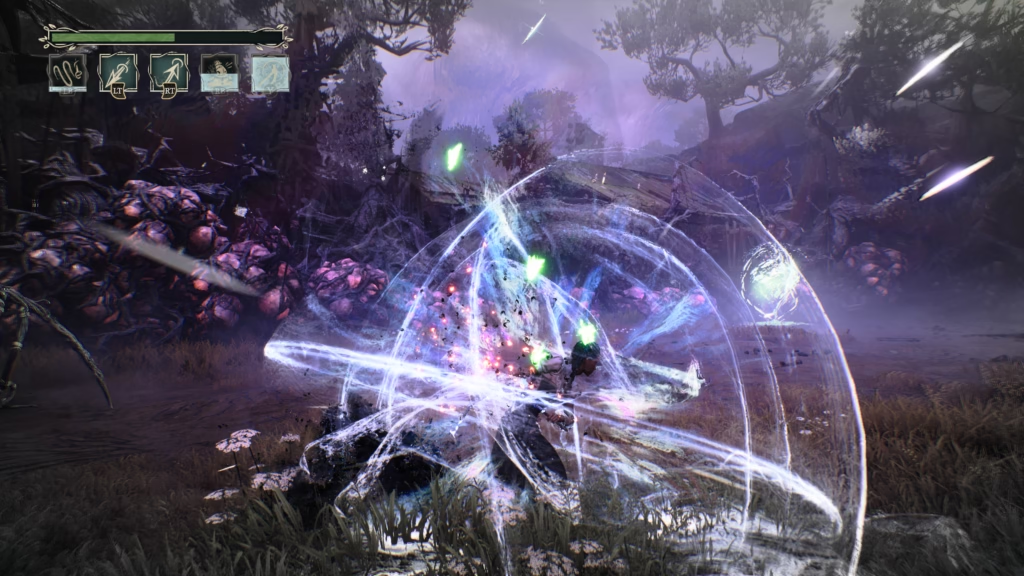
The aforementioned trauma, I would learn, manifests itself as Haints, spirits that seek to attack you and emerge from the disruptions in the Grand Tapestry (leading to the corruption). Dispatching Haints allows Hazel to remove the disruptions, which in turn allow her to gain a greater understanding of the game’s various supposed antagonists. Unlike other games where clearing the corruption was the ultimate goal, here it was more like a means to an end. By the end, it became clear that the corruption stuff is not central to the game and only serves as a vehicle by means of which to unravel secrets, and combat even at the very highest difficulty level is quite basic.
Now when it comes to the actual mechanics of fighting, it’s a basic mix of quick attack, strong attack, rolls, and shoulder buttons to unleash magic. This simple but effective combination is sufficient to get you through all the Haints the game throws at you, and let you have fun while doing it. Along the way, you do unlock stronger attacks and more potent magic, and this adds to the experience. However, while I praised the compartmentalisation of the storytelling a few paragraphs earlier, I wasn’t a fan of the compartmentalisation of combat situations. Perhaps as a consequence of the level design, fights only take place in designated areas where Haints exist. This means that there are no random battles or ambushes. So while I thought there was a sufficient amount of combat, it didn’t feel like it came my way organically.
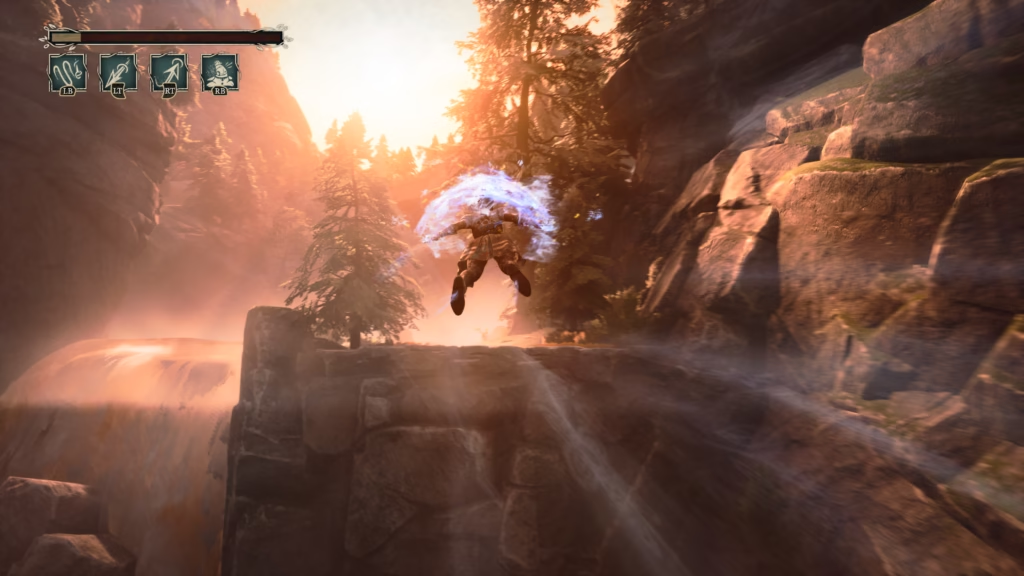
When Hazel is not fighting Haints, she’s out exploring and traversing across Prospero. This entails a bit of 3D platforming, some gliding (as seen above), wall-running, zipping from point to point, and grabbing white ledges (hey, at least they’re not slathered with yellow paint) to move along surfaces. Admittedly, all of these come together to make traversal a fun activity, but I found myself disenchanted halfway by how it wasn’t really challenging. Even after I’d turned off as many of the signposted hints as I could, it was less a case of figuring out how to go from A to B than just doing it mechanically. I enjoyed hunting down Floofs (as the name suggests, fluffy balls of magic that act as currency when levelling up) hidden all over the place, but that was only a slight distraction from the somewhat mundane traversal.
And that is a real shame because the world of South of Midnight is absolutely gorgeous and rendered in this quasi-stop motion/claymation-esque style that I absolutely adored. This style is clearer in cutscenes than in-game (you even have the option of disabling stop motion in-game), but it gives the whole game a great sense of personality, along with looking great. Moving along to other things I adored, there’s Crouton, Hazel’s delightfully-named toy that comes to life and acts as an ally who can be summoned at any time. In combat, he takes over Haints and fights as them on your behalf (for a brief period). Outside of combat, he can be used to explore otherwise unreachable areas. Crouton, by his presence, adds a much-needed bit of lateral thinking to the mix.
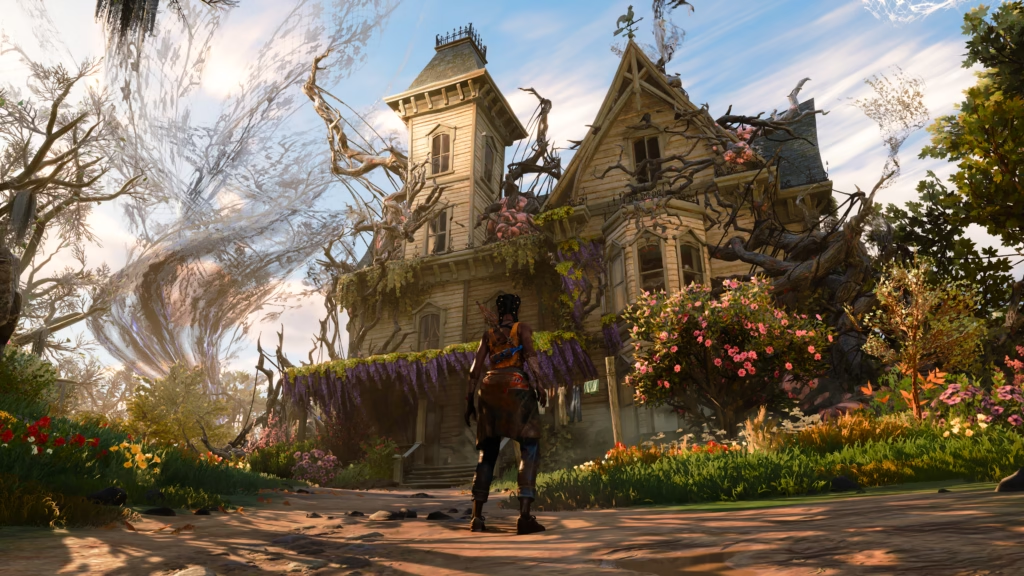
Final thoughts
Overall, I thoroughly enjoyed my time with South of Midnight. The story was extremely compelling and heartwarming, and it made an honest effort to explore some complex emotional themes. This was helped in no small part by the tapestry of writing, visual design and music coming together so perfectly to bring Prospero to life. I found Hazel to be an extremely relatable and likeable protagonist, and was curious through every twist and turn to see where the tale would go.
South of Midnight loses points in my book for the manner in which it handles its action in general, and combat in particular. As I’d stated earlier, the traversal isn’t particularly challenging, but it would’ve been great to see some of its attributes like zipping across points, gliding or wall-running incorporated in the combat. The compartmentalisation of combat zones felt like a missed opportunity to bring the best of action and adventure together. I often got the feeling that the game was kept simple because the narrative part was the developers’ priority. Not least because there are accessibility options in the game to skip boss fights and skip combat entirely.
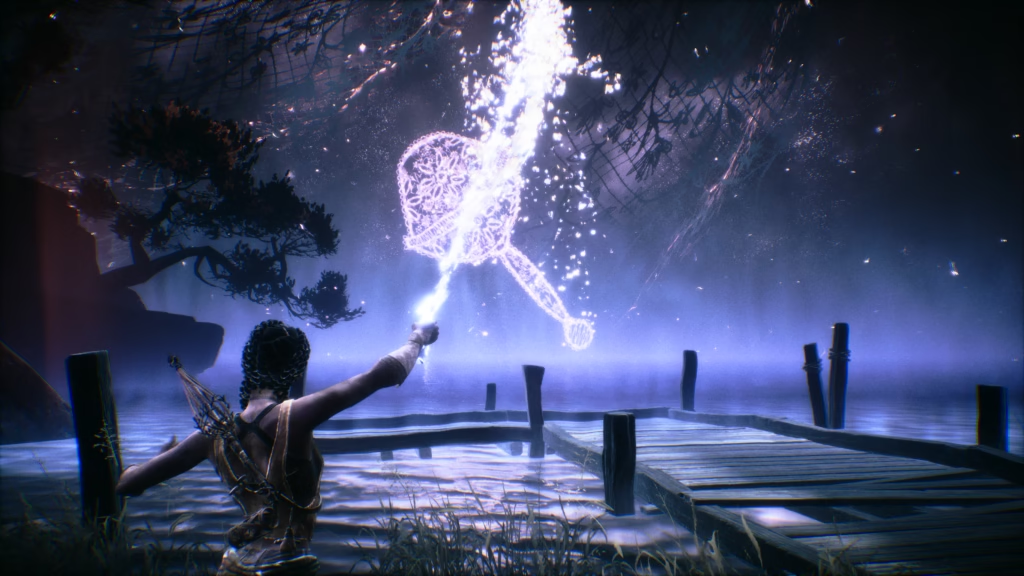
That said, South of Midnight is well worth your time if viewed as a fascinating adventure to be experienced rather than a game to be beaten. The cast of characters is extremely memorable, and none of them feels half-baked or like an afterthought. Additionally, the exploration of Southern Gothic themes have inspired me to check out more of the folklore the genre encompasses.
Game reviewed on Xbox Series X. Review code provided by publisher
